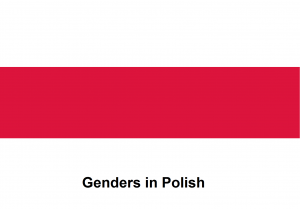Language/Polish/Grammar/Gender
.
Hello Everyone, 😊
In today’s lesson we are going to study the following topic: ”GENDERS” in Polish
Please feel free to edit this page if you think it can be improved!
Good learning!
.
.
Genders in Polish
| ENGLISH | POLISH | PRONUNCIATION IN
ENGLISH |
BRAZILIAN
PORTUGUESE |
| THIS (male) | TEN mężczyzna | tehn mehn zhih chih zhih nah | Esse homem |
| THIS (female) | TA kobieta | tah koh bih eh tah | Essa mulher |
| THIS (neuter) | TO dziecko | toh jih eht skoh | Esse bebê |
| THIS (neuter) | TO krzesło | toh ksheh sou oh | Essa cadeira |
Polish is a tough language to learn and that's common knowledge.
The reason behind it is not only the alphabet (which has 32 letters as opposed to English 26) but among other things, gender.
It can be really confusing for non-native speakers that are trying to learn Polish because the language is gendered.
There are three different genders.
Male, female and it.
While male and female are referring to men or women, "it" words refer either to babies or inanimate objects.
A few examples:
- Chair - TO krzesło (the "it" pronoun)
- Baby - TO dziecko (same as above)
- Woman - TA kobieta (female)
- Man - TEN mężczyzna (male)
In Polish it is so important, because verbs must be inflected to every gender.
For example in the past simple in English, we describe only verb+ed or irregular form of this verb.
In Polish past tenses we must add the right letter in the end of verb.
For example :
- verb BYĆ (be)-> JA BYŁ(EM) - It says man / JA BYŁ(AM)- It says woman

